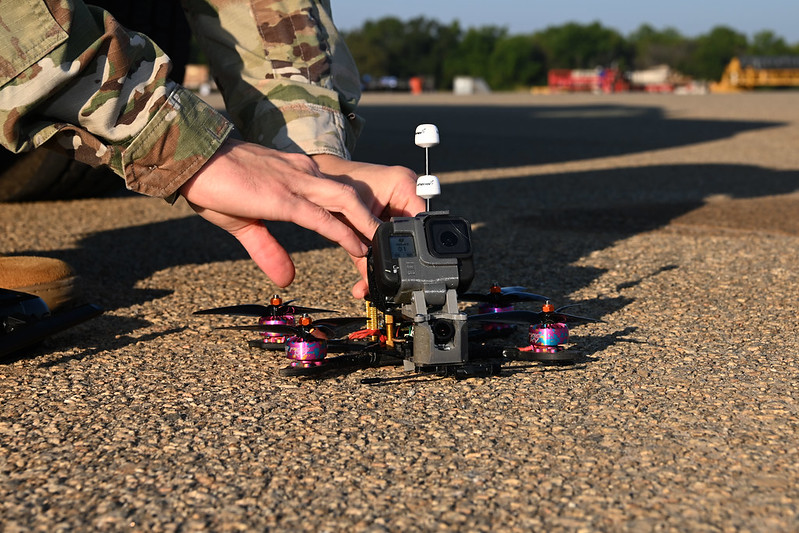
U.S. Air Force Lt. Col. Alvin McConkey, director of inspections for the 169th Fighter Wing’s Inspector General’s office, ensures a Go Pro camera is recording before conducting a drone flyover of the runway construction at McEntire Joint National Guard Base, South Carolina, September 21, 2022. McConkey is a licensed drone pilot and is assisting public affairs in acquiring ariel footage of the runway construction. (U.S. Air National Guard photo by Airman 1st Class Danielle Dawson, 169th Fighter Wing, Public Affairs)
No, I’m not talking about the U.S. military’s failure to recruit its intended numbers of new servicemen, but the labor shortages plaguing the military-industrial complex. The Pentagon and Washington, D.C. would like to throw billions of American dollars into producing new drone aircraft of all shapes and sizes, but there simply aren’t enough Americans with the know-how or desire to build them all. Doug Cameron reports for The Wall Street Journal:
The Pentagon wants to acquire thousands of drones over the next two years that can fly to their targets, confuse radar, overwhelm enemy defenses, fire missiles and gather intelligence. But making the uncrewed aircraft quickly and cheaply is another matter.
Mass production of large and small drones is crucial to the Pentagon’s plan to build big stocks of weapons and ammunition to deter China, which the Defense Department describes as the U.S.’s prime strategic competitor.
U.S. military leaders have lined up to warn of China’s ambitions to absorb Taiwan, perhaps in the next few years. The scale of China’s own military buildup, including thousands of missiles, jets, ships and drones, can only be challenged by the U.S. making more, and soon, say Pentagon leaders.
The Pentagon has proposed two marquee drone concepts. The Replicator program championed by Deputy Defense Secretary Kathleen Hicks would produce a huge fleet of air-, land- and sea-based drones that could be deployed by the thousands. These would swarm to ensure some evade defenses to reach their target or relay information, and be cheap enough to use just once.
The Air Force’s “collaborative combat aircraft” program would fly much bigger autonomous drones alongside the new B-21 bomber and the advanced F-35 jet fighter, working as a wingman and adding dots on an enemy’s radar screen.
Uncrewed aircraft are much cheaper than the U.S.’s premium jet fighters, and pilots take years to train.
“This is about affordable mass,” said Gen. Dale White, head of the fighters and advanced aircraft programs at Wright-Patterson Air Force Base in Ohio.
But the Pentagon’s goal must contend with booming demand in the commercial aerospace market that has left a shortage of skilled labor, raw materials and parts such as advanced electronics and fasteners. The Pentagon wants to buy thousands of cheap drones in as little as 18 months, and as many as 2,000 larger uncrewed jets. By contrast, one of its primary drone suppliers, Shield AI, produced 38 of the aircraft last year.
“The intended volumes and variants of Replicator aircraft will require production capacity and flexibility not typically found in the defense industrial base,” Oliver Wyman, a consulting firm, said in a recent report.
Supply-chain turmoil
Existing defense programs are already being hit by supply-chain snarls. Boeing has blamed staff and parts shortages for delays on programs such as the jets that will fly as the new Air Force One.
“Industry is having a very hard time meeting targets with fighter jets that have extremely well-established supply chains and contractor bases,” said Richard Aboulafia, a supply-chain expert at consultant AeroDynamic Advisory.
To build weapons faster, cheaper and in greater quantities than ever before, the Pentagon is looking beyond the major defense contractors to smaller firms, often backed by venture capital.
Read more here.
